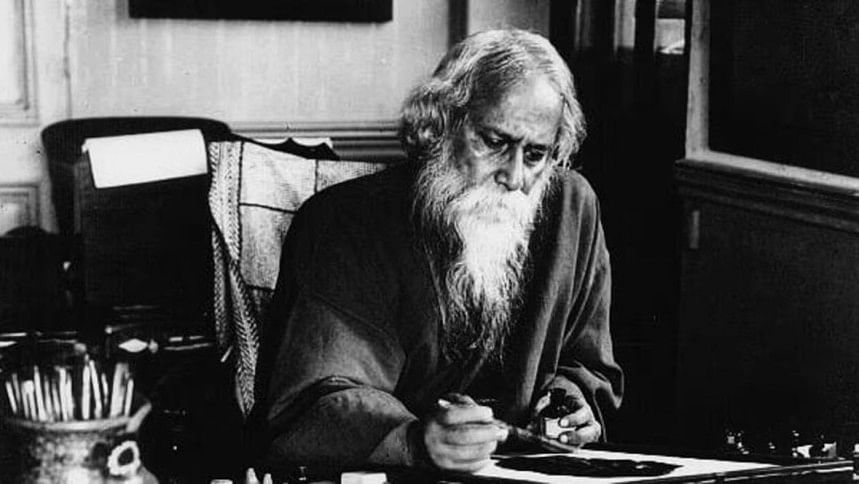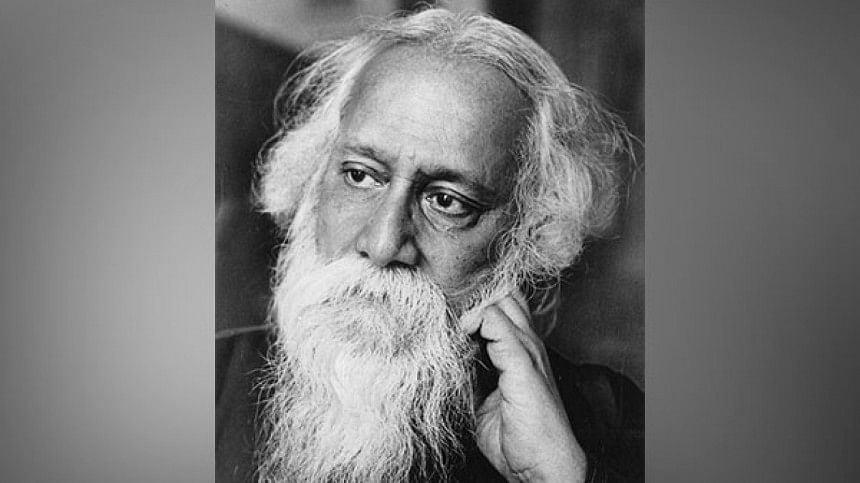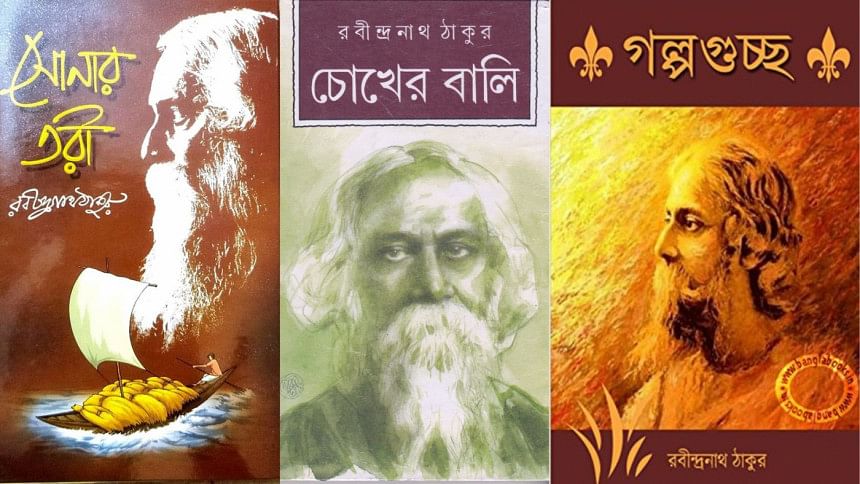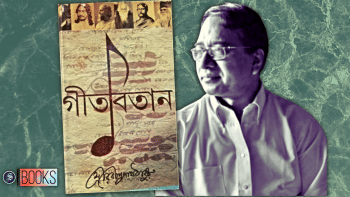The forever debt to Rabindranath Tagore

"Take it, take as much as you can load.
Is there more? No, none, I have put it aboard."
- "Sonar Tori (The Golden Boat)", Rabindranath Tagore
From children's books to internationally applauded films, from lyrical ballads to Netflix series, wherever we put our senses, they are filled with the legacy of the "Bard of Bengal", Rabindranath Tagore. Do we ever ask ourselves what we would do without him? Do we wonder how the entire culture of the Indian subcontinent is wrapped around his existence? The infinite resources left by him that will forever enrich the art and culture of the Indian subcontinent are not the only thing that put us in debt; his life, his philosophy, his persona, his way of thinking –all of these are considered enigmatic by some, but are somehow etched into our very souls.
On his 82nd death anniversary, we celebrate and pay tribute to his cosmic splendour.

What is art? Whatever creative outcome stimulates us in one way or another is what we can call art. Yes, the poems we have studied and enjoyed in our textbooks count too. The earliest memory most of us have is reciting Amader chhoto nodee chole baake baake by Tagore. And we can assure you, the rhythms of his poetic masterpieces have influenced our contemporary poets and lyricists. Now let us come to Megher kole rowd heshechhe –the song we learned in school or maybe from our mothers. Speaking of our parents, have we not heard them hum Tagore's song to us, teaching us and explaining the meanings? Every piece of his song serves as oxygen in the realm of human emotions.
Growing up, we watched Shyama, Shaapmochon, Mayar Khela etc, on TV channels. So the next stage of our entertainment came in the form of Tagore's lyrical ballads. During his time, the television or cinema was not there. But do we not see Bollywood, with songs and dancing –illustrating beautiful stories? Our beloved Nobel Laureate paved the way through his lyrical pieces. To this day, the theatrical stages of Bengal follow the essence of his works. His versatility and immenseness are undeniable.

Tagore, the Maupassant of Bengal, and his collection of short stories in "Galpaguchchha" remains the bible for filmmakers, directors, and creatives from all spheres in this sub-continent, even 82 years after his demise.
We see his stories being adapted to Netflix series like in Anurag Basu's directorial "Stories by Rabindranath Tagore", and songs being recreated in Coke Studio Bangla and in films, series, etc. However, Tagore's mastery and influence are not only limited to his creation but how it still relates to and influences the art and cultural scenario of the Indian subcontinent overall.
Direct adaptations and frequent references from his vast body of work have long been subdued by his subtle yet significant influence and have brought about a whirlwind cultural shift. Be it the use of his painting in the popular Karan Johar's Bollywood movie "Rocky Aur Rani Ki Prem Kahani" or the photograph of popular Indian actor Anupam Kher's portrayal of Tagore; both of which created such a stir that divided his admirers all over the sub-continent.

Maestros like Satyajit Ray, Ritwik Ghatak, and Rituparno Ghosh have drawn significant inspiration from Tagore and made us see how art can pervert and divert constraints of societal prejudice, expression, time, and creativity. Tagore's literature is well-known and read, and his ingenuity is beyond doubt; still, the greatest of his quality is that you can always take snippets and fragments from his creations and almost always go in a new direction and make something new. Take Anvita Dutt's "Bulbbul" (2020) as an example. Although the story of this supernatural thriller is not adapted from Tagore, the audience will sense his presence in every scene.
After Satyajit Ray, the legendary director Rituparno Ghosh probably utilised Tagore's oeuvre the most in his films, but his finest celestial collaboration with Tagore is his 2012 directorial film "Chitrangada: The Crowning Wish". This internationally recognized film–widely believed to represent Ghosh's own journey toward his gender identity– breaks the shackles of societal prejudice and gender norms yet never outshines Tagore's composition.
And what can be said about Tagore's songs? To Bengalis, there is only a fine line between God worshippers and Tagore admirers. He created such a confluence that our sense of the celestial and his verses got intertwined, and we lost ourselves in him long ago.
There is little to no account of a nation which celebrates its favourite laureate's birth and death date with such celebration and grandiose. One could find Tagore's portrait hanging on the walls of almost every household in the Indian peninsula, manifesting him as both a God and a beloved.
"Baishey Srabon", the 22nd day of the Bengali month Srabon (Monsoon), is not a mere date. The mighty laureate, poet extraordinaire Rabindranath Tagore, passed away 82 years ago today, but did he actually ever leave us?


 For all latest news, follow The Daily Star's Google News channel.
For all latest news, follow The Daily Star's Google News channel. 










Comments